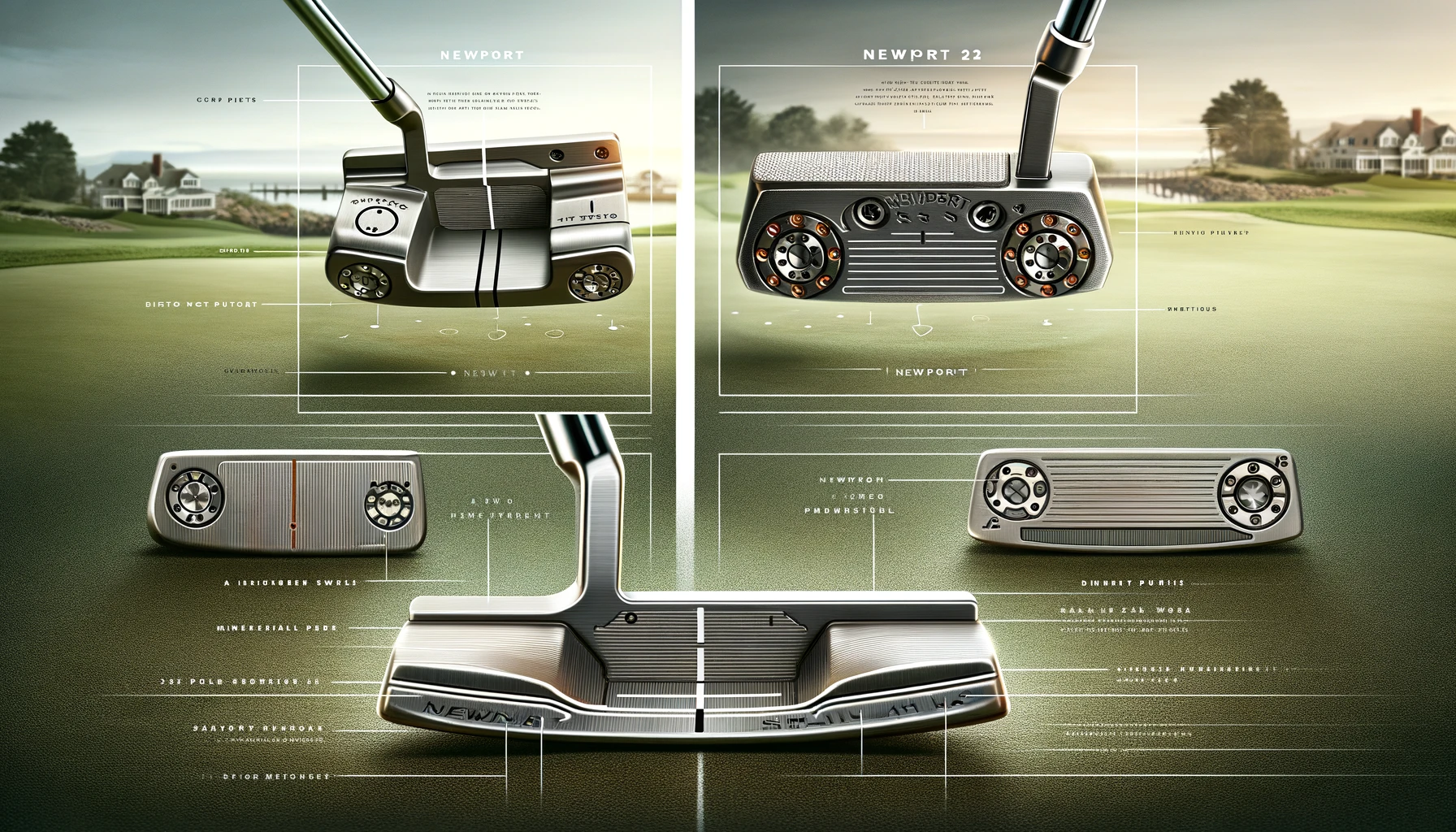Difference between Newport and Newport 2
Are you torn between the Scotty Cameron Newport and Newport 2 putters? Understanding the difference between Newport and Newport 2 can significantly impact your game. In this article, we break down these differences in a straightforward, easy-to-understand manner.
- Main Differences at a Glance:
- Head Design: Newport boasts a smoother contour, while Newport 2 has a more mechanical look with sharper lines.
- Alignment Aids: Newport 2 offers enhanced alignment features compared to its counterpart.
- Feel and Feedback: Each putter delivers a unique touch, influencing your control and confidence on the green.
We aim to provide golfers, whether amateurs or pros, with a clear comparison of these two premium putters. From their distinct head shapes to subtle nuances in weight distribution and balance, we’ll explore every aspect that sets them apart.
- What to Expect:
- Discover the subtle yet crucial differences in design and construction.
- Learn how each putter’s unique characteristics can complement your putting stroke.
- Gain insights from golfer experiences and preferences.
Our goal? To help you decide which putter – the classic Newport or the refined Newport 2 – aligns best with your style and needs on the course. Let’s dive into the world of these iconic putters and find out which one might be the perfect fit for your golfing arsenal.
Comparison Table: Newport vs Newport 2 Putters
| Feature | Newport Putter | Newport 2 Putter |
|---|---|---|
| Head Design | Smooth contours with a slightly rounded profile. | Mechanical look with sharper lines and angles. |
| Alignment Aids | Subtler alignment features, focusing on simplicity and traditional design. | More pronounced alignment aids for improved visual guidance. |
| Feel and Feedback | Provides a softer feel at impact, preferred for its responsiveness. | Offers a firmer feel, giving a sense of precision and control. |
| Weight Distribution | Evenly balanced for a consistent swing. | Slightly heavier at the heel and toe for enhanced stability. |
| Material and Construction | Made from 303 stainless steel, known for its smooth feel. | Also uses 303 stainless steel but with a focus on precision milling for consistency. |
| Head Shape | Typically features a smaller head size, promoting a classic style. | Larger and longer head size, giving a feeling of increased control. |
| Topline | Flatter and narrower topline, appealing to traditionalists. | Slightly thicker topline, offering better alignment. |
| Sweet Spot | Positioned to suit golfers with a consistent stroke. | Larger sweet spot, catering to those needing more forgiveness. |
| Price Tag | Generally, a bit more affordable due to its classic design. | Often comes with a higher price tag, reflecting its advanced features. |
| Professional Use | Frequently seen in the bags of golfers who prefer a traditional putter feel. | Used by golfers who value technical precision and modern design elements. |
| Personal Preference | Ideal for players who value feel and a more traditional putting experience. | Suited for golfers looking for more alignment assistance and stability in strokes. |

